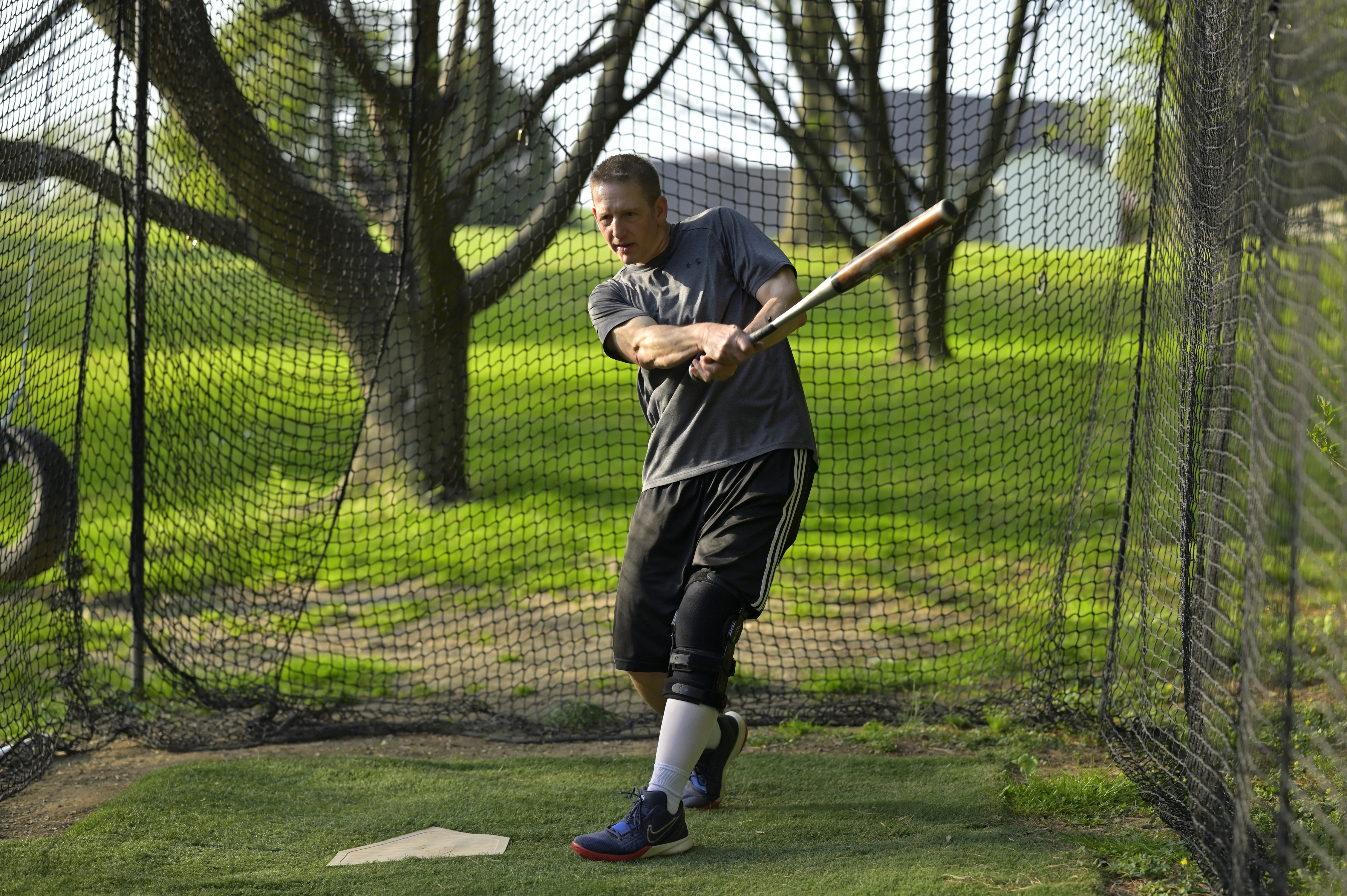 Ken Strawhecker, Orthopaedic Patient
Ken Strawhecker, Orthopaedic Patient
More than half a million Americans undergo knee replacement surgery every year. Few of these cases are as complicated as Ken Strawhecker’s.
On November 20, Strawhecker had one of the most complex knee replacements ever performed at Chester County Hospital in West Chester, Pennsylvania. It was a multi-part procedure that involved two orthopaedic surgeons working together over several months.
Partnerships like this are becoming increasingly common between Chester County Hospital and the Hospital of the University of Pennsylvania – both members of Penn Medicine. The goal of this "systemness" is to keep more medically complex patients in their own community instead of having them travel downtown for care. Strawhecker was the beneficiary of this philosophy.
"Ken’s medical story began when he was in a car accident at age 19 that caused severe open fractures of his knee and femur," said Chet Simmons, MD, Chief of Orthopaedic Surgery at Chester County Hospital and Vice President of Premier Orthopaedics. "He underwent several surgeries to try to correct his leg injuries, but he was left with severe scarring and bone deformity."
"The old injury also led to arthritis in his knee, which caused him severe pain that he was managing with medications and braces," he continued. "A knee replacement was really his only option, but we couldn’t do that safely without first addressing the skin damage and scar tissue in his knee."
Simmons knew just the specialist for the job: L. Scott Levin, MD, Chair of Orthopaedic Surgery at the Hospital of the University of Pennsylvania who also is a plastic surgeon and a world-renowned specialist in microsurgical techniques for soft-tissue reconstruction – a field known as "orthoplastic surgery".
"A critical factor in successful joint replacement is having an adequate and stable soft-tissue envelope around the bony structures through which to operate safely and ensure proper healing," Levin said. "In Ken’s case, we performed what’s called a free flap procedure. We took living tissue with its blood supply from his proximal thigh and transplanted the tissue to the knee, connecting small blood vessels using the microscope to assure viability of the tissue."
The procedure, which Levin likened to "reupholstering" the knee, went flawlessly. After three months of recovery, Ken was ready for his knee replacement surgery. "I knew going into this that it was a two-part process," said the 48-year-old Strawhecker. “As terrifying as the thought was of having someone cut into your bone and chisel it into the shape they need for the artificial joint, knowing I was halfway there kept me going.”
On the day of the surgery, Levin joined Simmons in one of Chester County Hospital's newly-opened operating rooms. Levin's role was to carefully raise the free flap and give Simmons access to the inside of the knee. Because of the existing structural damage in Ken’s knee, Simmons used a specialized implant to help make up for the severe ligament damage and deficiency that was present. Advanced, three-dimensional CT scans taken prior to surgery gave the team a clear roadmap to Ken's knee and the surgery was a success.
Strawhecker had several months of recovery and rehabilitation ahead of him, but after years of exponentially worse pain he’s looking forward to a better quality of life.
"I want to be able to throw to my kids in the backyard or walk up and down stairs without pain," he says. "I’m not trying to be a super athlete, but it’ll be icing on the cake if I can play a pickup game of basketball with the guys at work."

Surgeons Chet Simmons, MD, Chief of Orthopaedic Surgery at Chester County Hospital and L. Scott Levin, MD, Chair of Orthopaedic Surgery at the Hospital of the University of Pennsylvania — CHAMPIONS OF THE CHALLENGING TASK AT HAND.
Related Information from Chester County Hospital: